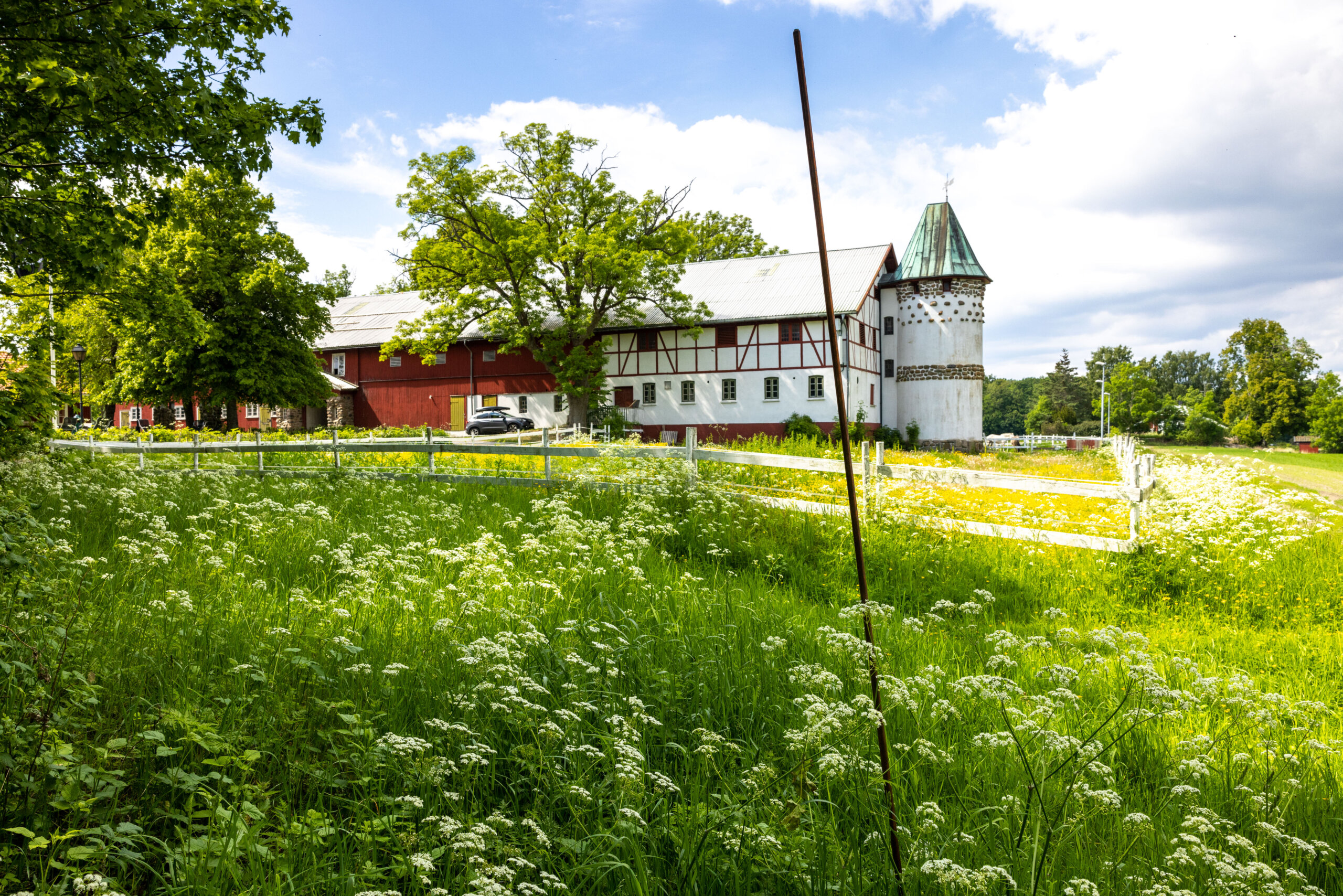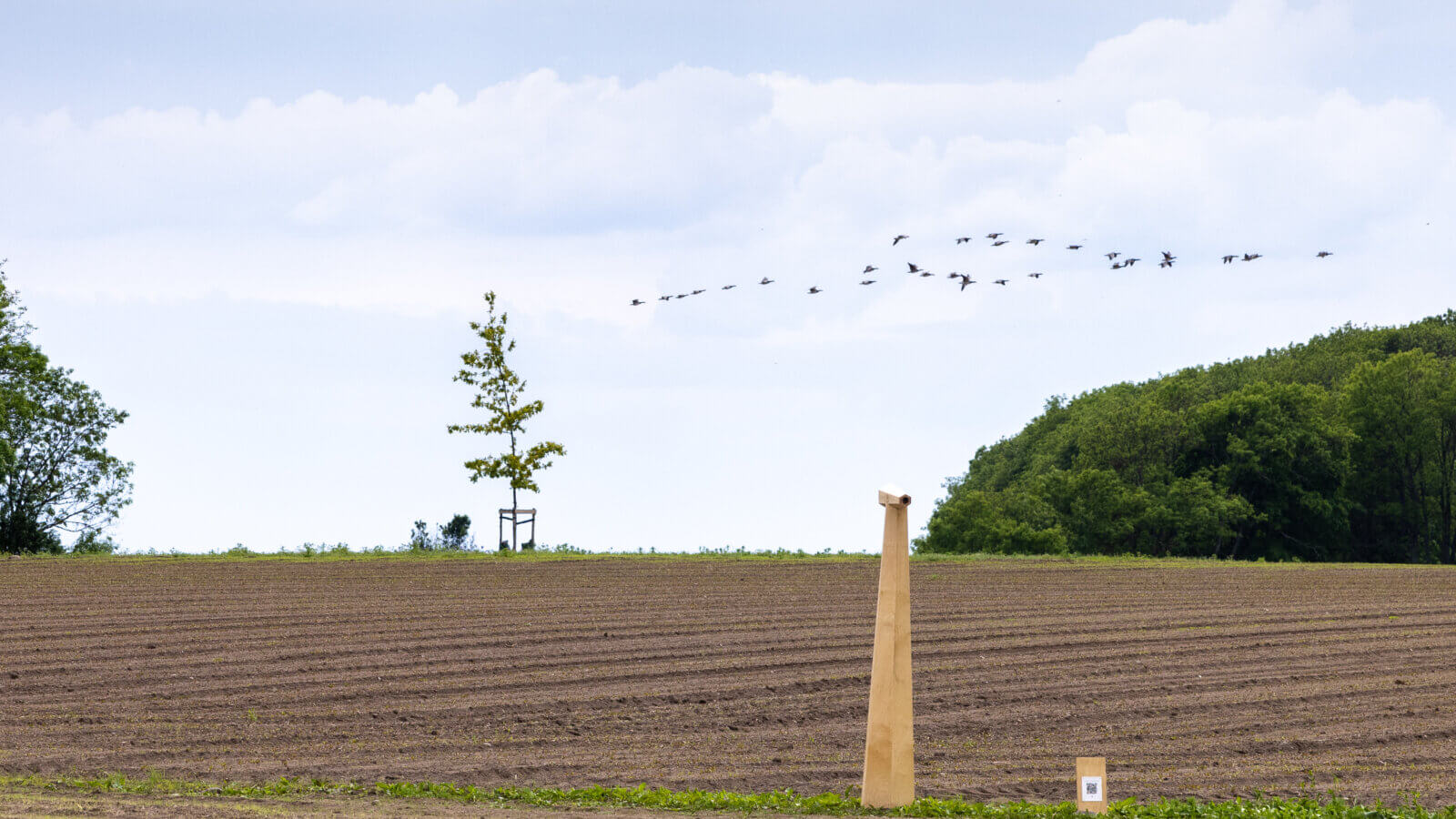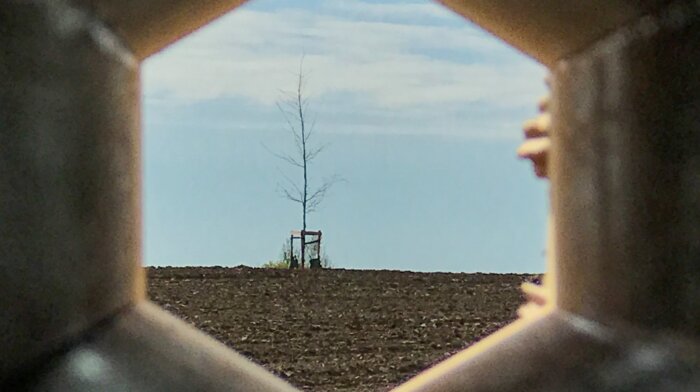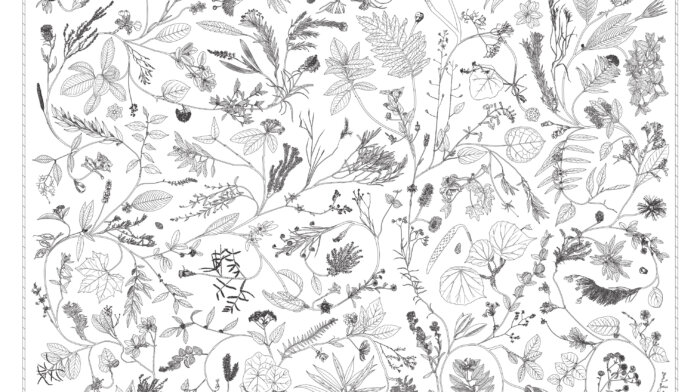Amina Baker Shubar
Pink Cloud
2022
Amina Baker Shubar uses clay as a medium to express her interest in survival mechanism strategies and environmental challenges, through sculptures taking different shapes and colours. Her sculptures interact with each other, whilst also interacting with the medium of sound. Her soundtracks discuss such topics as weather, climate change, animals and escape, combined with her own history and background as well as the sounds of endangered species. The soundtracks are emitted from within the sculptures.
For Baker Shubar the Pink Cloud is a symbol of survival strategy. Pink colours in the sky on a cold sunny winter day can compensate for grey, sad days throughout the winter. After a sunny day, people gather and take pictures of these clouds, and post them on Instagram. They may not think about much other than the joy it gives them, there and then. At the same time these pink clouds can be a sign of the Anthropocene, man-made environmental emissions, pollution, the reminder of mass production and new capitalism, these pink colour palettes symbolize joy, hope, and survival.
Amina Baker Shubar (b. 1988) is a visual artist and illustrator. In her practice, Amina is keen to research at meeting points between knowledge, power and culture. How power and culture affect nature and our society on different levels. Baker Shubar works mostly with sculpture, photography, drawing and installations. Baker Shubar is currently undertaking the last year in her MFA in Art and Public Space at the Oslo National Academy of the Arts.
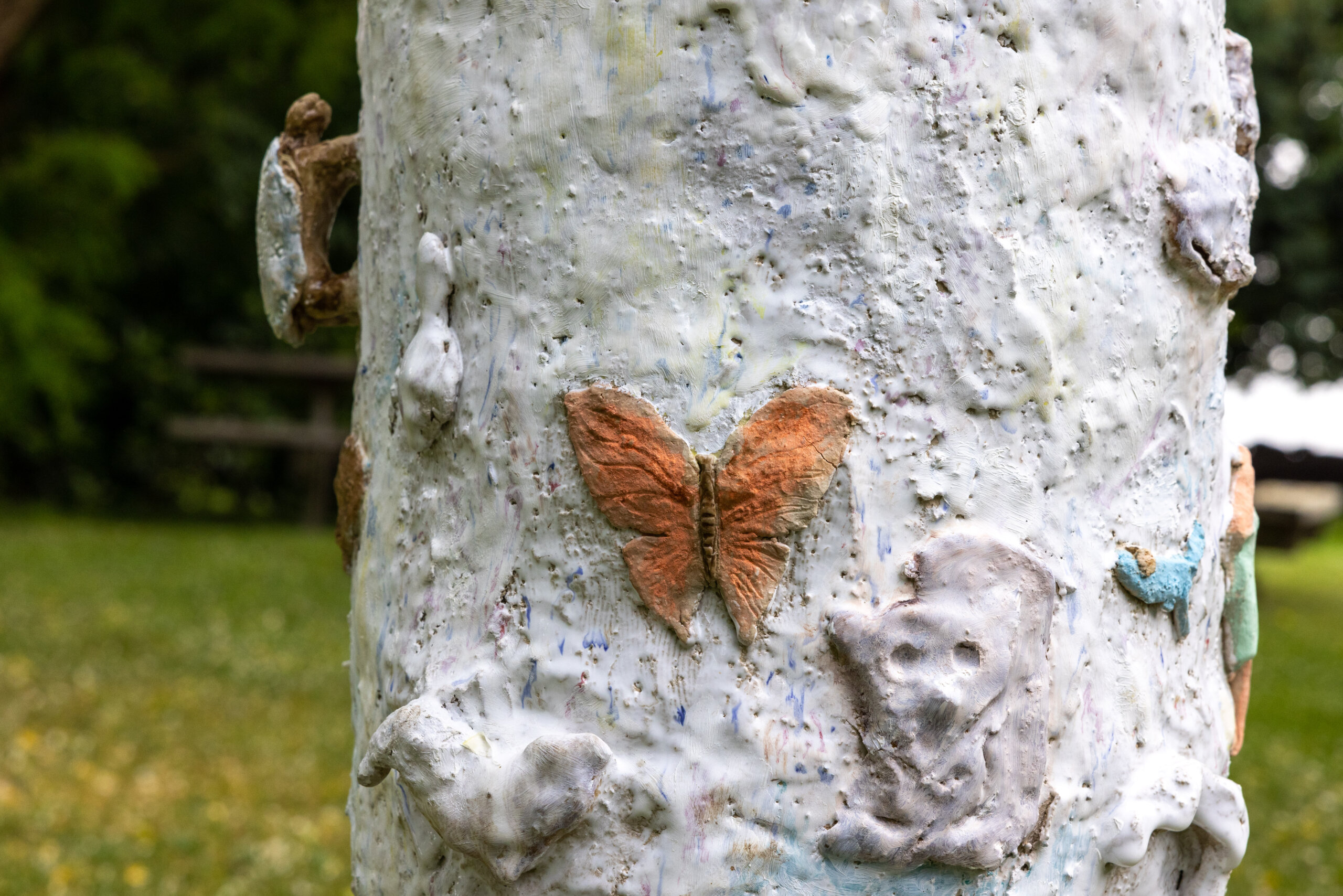
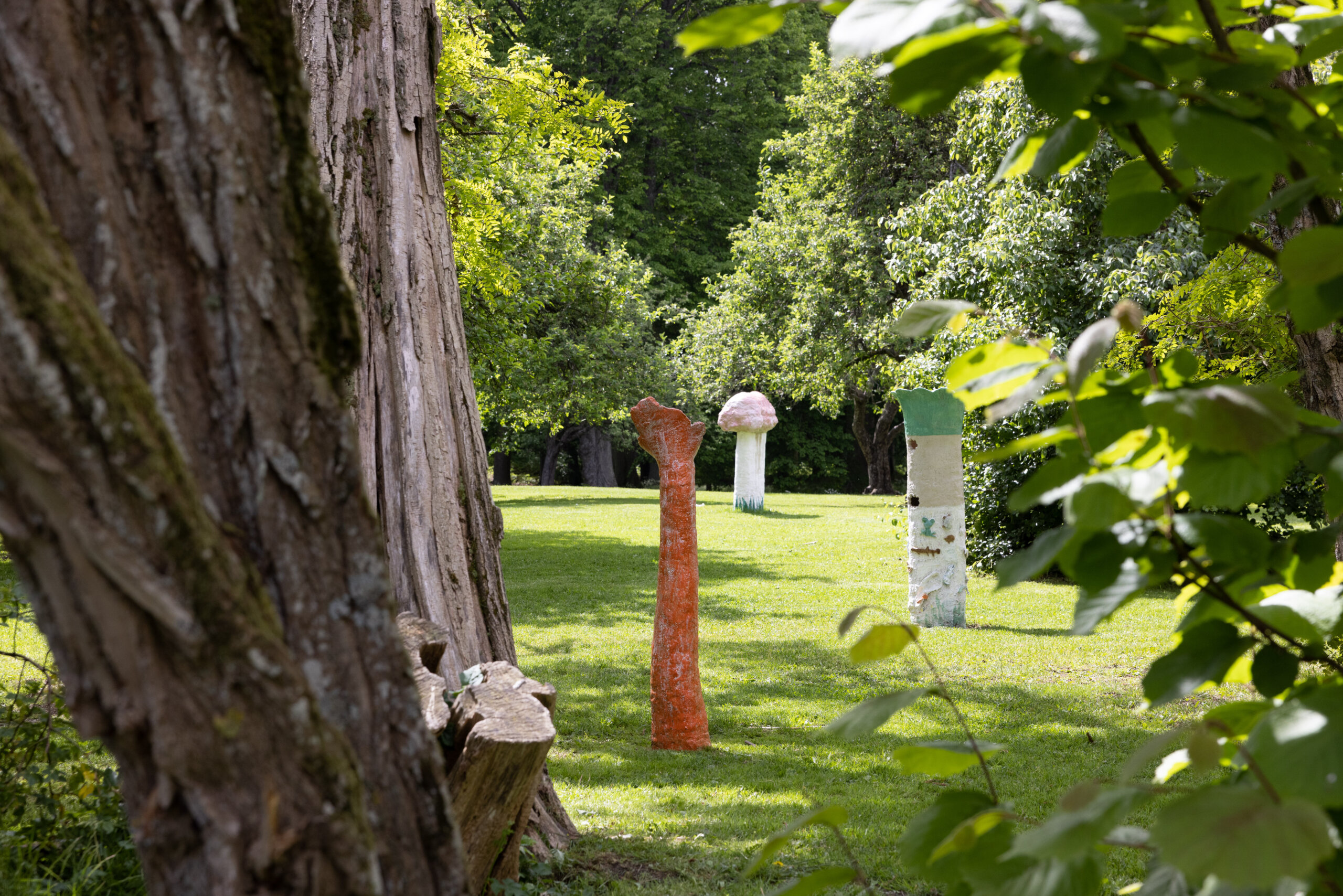
Jad El Khoury
Healing Blanket – A platform for serendipities
2022
After having used outdoors textile to reactivate and heal accidental war monuments in Beirut, these curtains will appear again in a humbler approach, as a socially engaged, participatory work. This iteration of the curtain’s appearance will invite visitors to go beyond merely observing a curtain hanging in an empty window of an unreachable, abandoned building. Here, the curtain transforms into a picnic blanket placed on the ground, waiting for Galleri F15’s visitors to use. A movable platform of serendipities, to be inaugurated outside in the Baroque Garden in front of the gallery.
For El Khoury, the Healing Blanket comes with a sense of urgency, after coming to the realization that trauma and depression are not conditions exclusive to war-torn countries. The Healing Blanket is an antidote to the white circles in the parks reminding us to remain socially distant during covid, with a scale large enough for different groups to simultaneously share in its multi-patterned space. Placing an emphasis on healing, the blanket will also be activated via an offering of yoga, meditation, and a curated library of self-healing books.
The fabric is weather resistant and will remain outside for the duration of the exhibition. However, the power of the material here lies not in its physicality, but in its relation to how it has been historically used to bring poetry and healing to ruins around the world; it is in the dancing and blessings it has been generating to different cities.
In El Khoury’s practice, ecological sensitivity, politics, architecture, memory-work, and heritage come together in pursuit of healing. The medium and techniques are constantly metamorphosing in response to the serendipities and contexts he encounters. Always with a sense of urgency and site-specificity, his projects vary from static visual installations to socially engaged practices.
After studying architecture at the Lebanese University and installing public art works around the world, he has been pursuing an MFA in Art and Public Space at the Oslo National Academy of Arts, culminating in the spring of 2022.
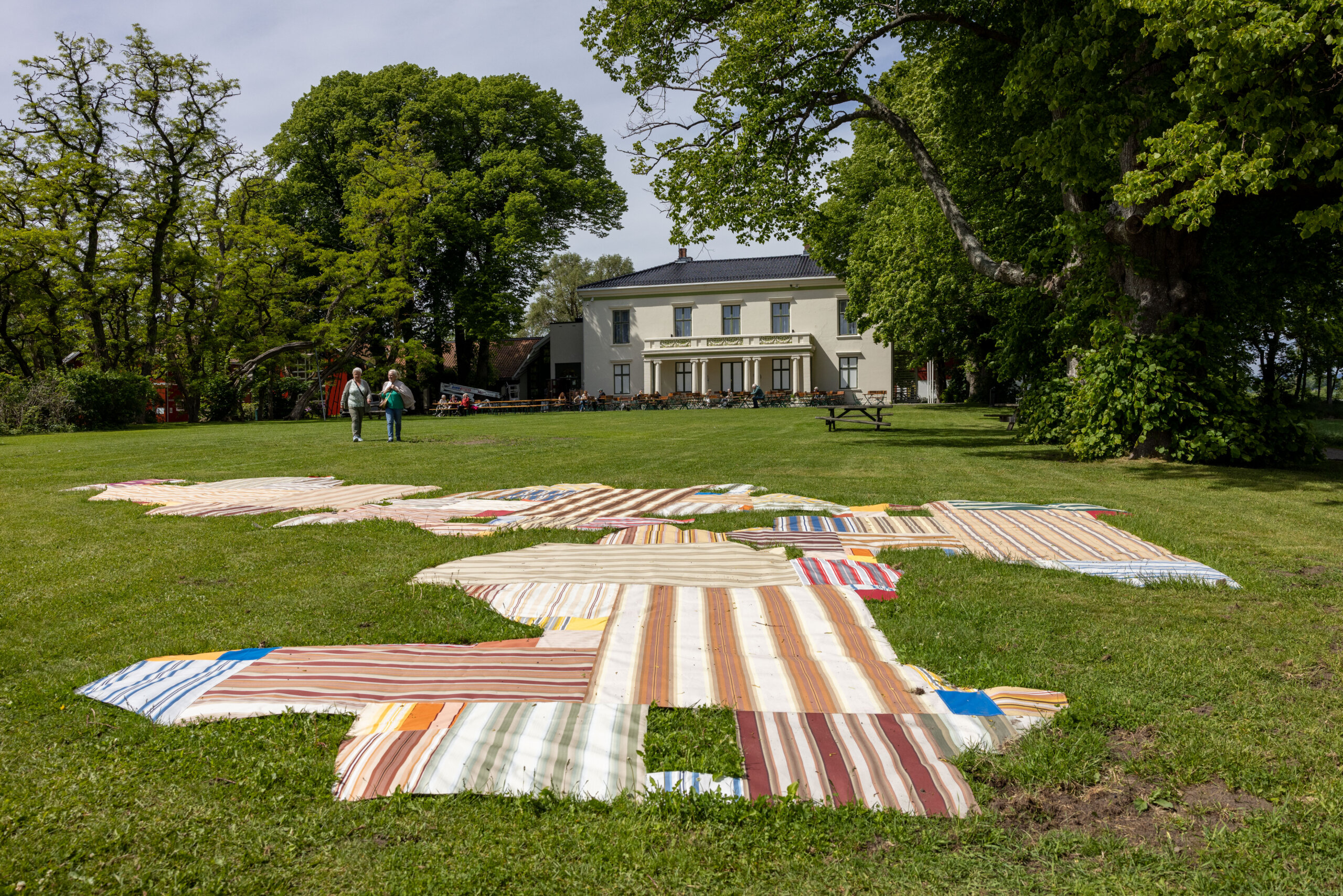
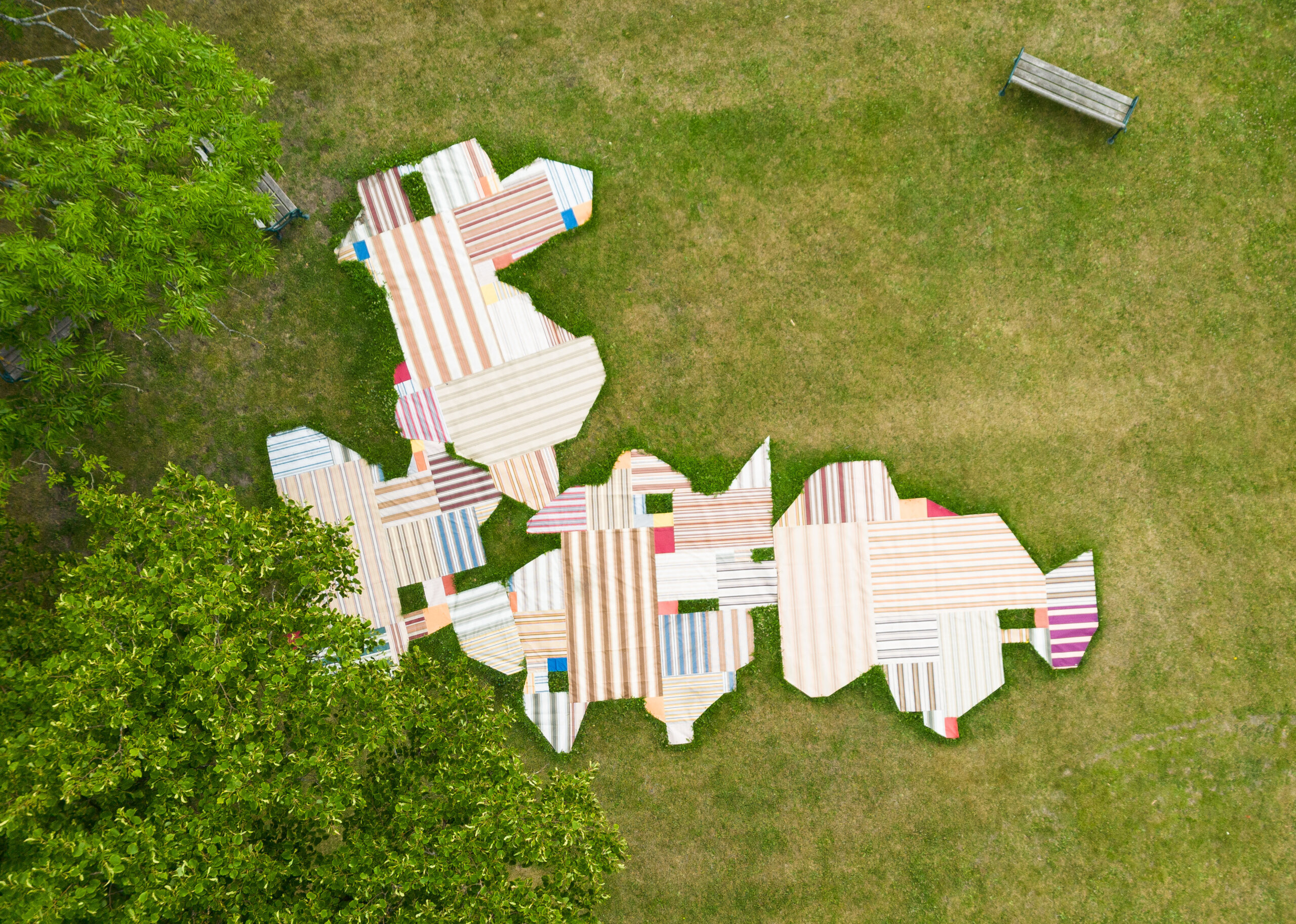
Sarah S.
Nældens takvinge, fjerde forsøg på Galleri F15 (vi hænger i det samme spind)
Aglais Urticae, Fourth Meeting at Galleri F15 (We are Hanging in the Same Web)
2022
28 May – 18 June
The project Aglais Urticae works to find ways, opportunities and hope in the charged field between humans and the species that live around them. The butterfly species ‘small tortoiseshell’ is one of the hardy species that lives very close to people; they live in our gardens and overwinter in our houses with us. It knows us and all the little nooks and forgotten nettle beds we leave behind, but most people do not know it. The project raises a series of questions. How do you really know a butterfly? Can one talk to it? Can one learn their language? And when do you go too far?
From the beginning of May to mid-June, S.’ will be present in the Nature House at Alby, co-living with the butterfly larvae which will undergo the metamorphosis into butterflies. A process full of silent mysteries and the possibility of becoming wiser about a species we are already close to. So come on in, have a cup of nettle tea and a chat with the artist or the butterfly caterpillars. Maybe getting to know each other is the way to a more sustainable way of living together?
‘Aglais Urticae’ is a project that is repeated annually in different contexts. The project’s first manifestation as an art project will take place in May – June 2022 at Galleri F15. This manifestation of the project is named Aglais Urticae, Fourth Meeting at Galleri F15 (We are Hanging in the Same Web).
S.’ works in sculpture and installation, with a special interest in the processual formation of kinship and coexistence with other species. Her works are based on interaction with specific places. Through her current work with selected sites, she explores, often through animal and plant networks, overlooked narratives and how she can facilitate a broader understanding of who is important to the course of history.
Her works have recently been shown at Hordaland Art Centre and Nitja Centre for Contemporary Art. In 2021, she received The Relief Fund for Visual Artists art student scholarship. In addition, she is the founder and curator of the exhibition platform and the artist network Vandrestaven Udstillingspunkt.
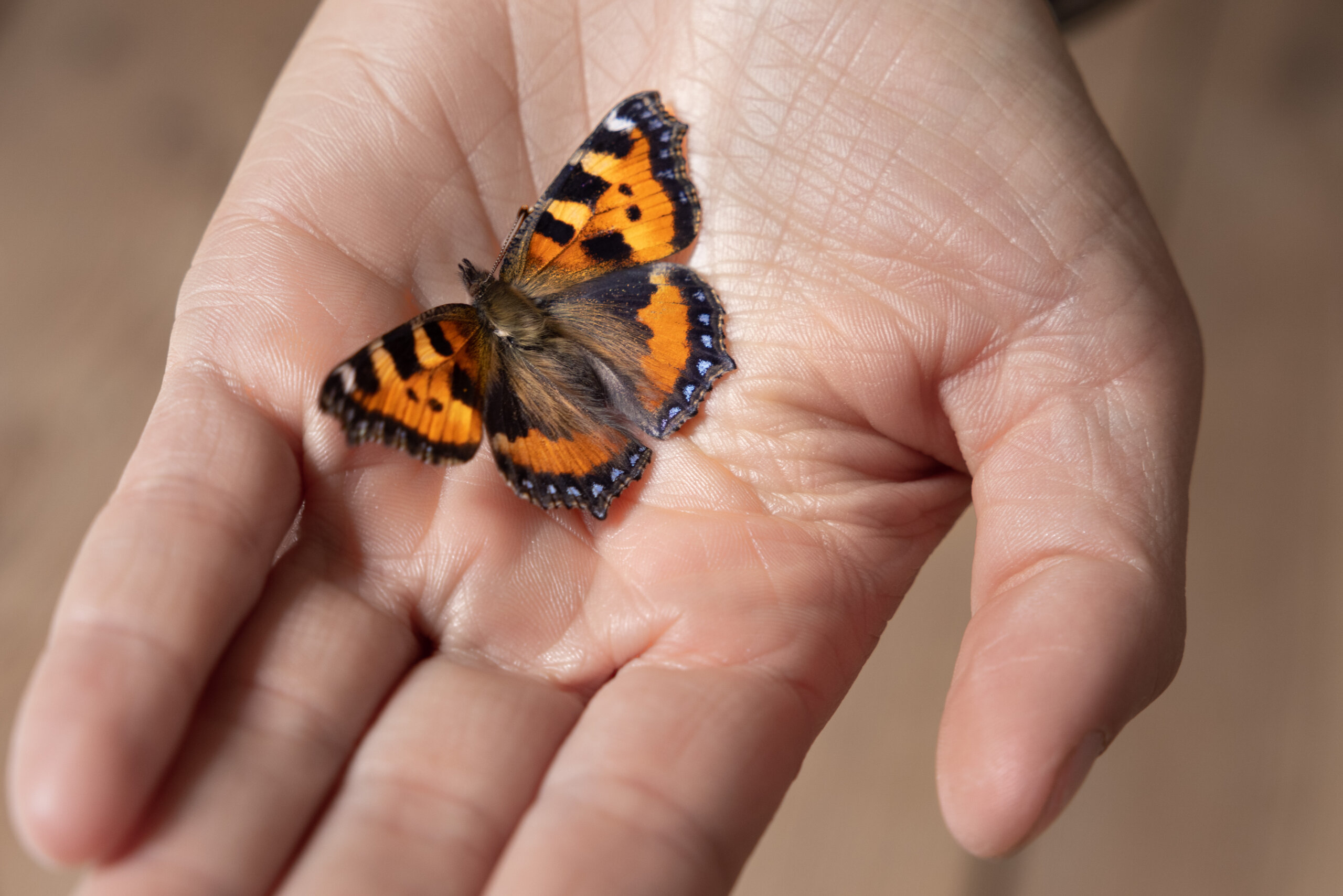
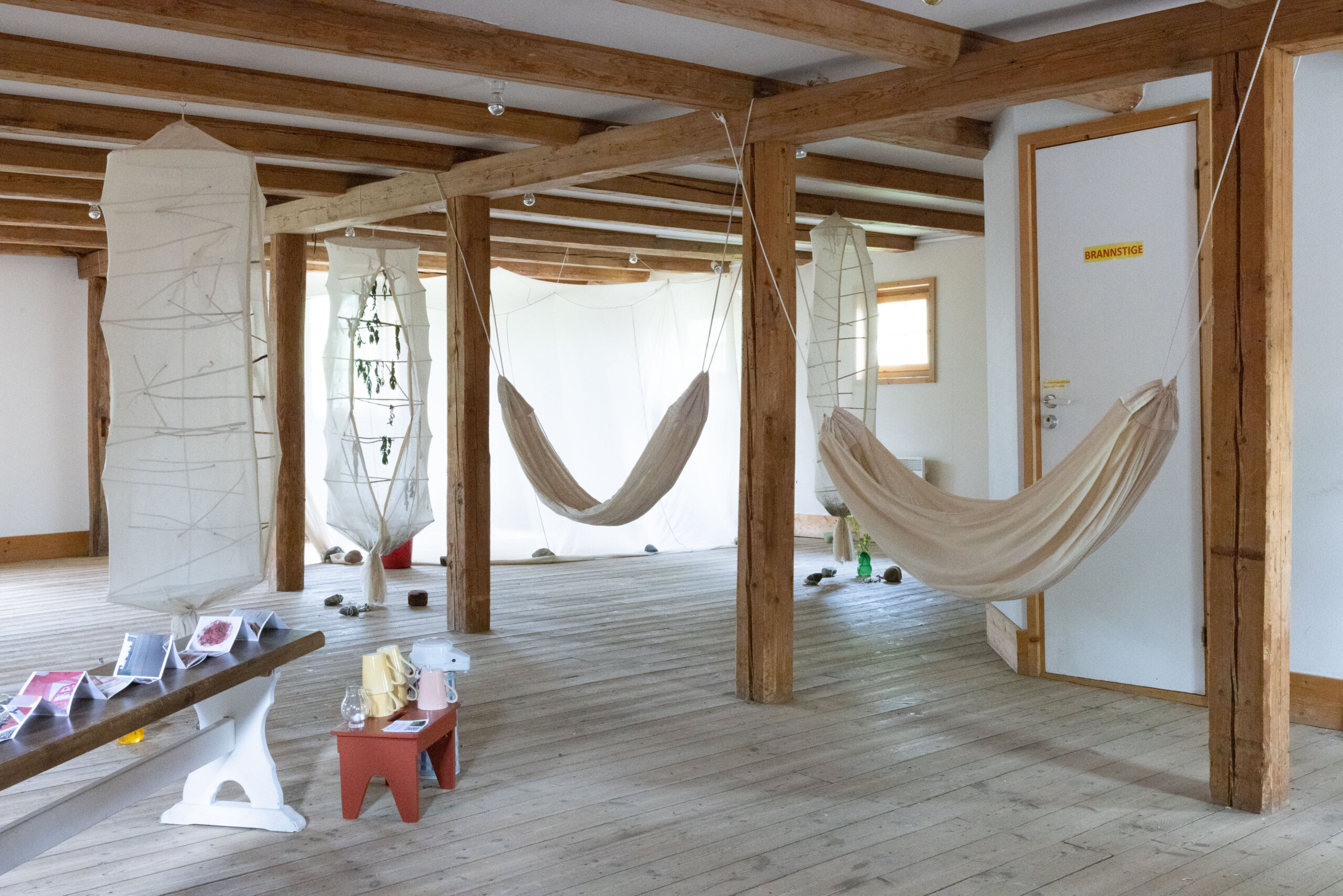
Sarah Sekles
Animal Conference
2022
In a field by Alby Manor House near Moss, a young and delicate oak tree is doing the job of remembering the death of a monumental 500-year-old oak tree, that was cut down by the German occupiers during World War II, to make room for artillery.
Animal Conference makes room for nature’s own discourse, leaving humans with the sole task of quietly listening. A circular stage is constructed by soil, seeds, water, and light with the wise presence of the young oak tree in its centre. Here birds, bees, worms, and wild animals interrelate and present their opinions. The stage will be accompanied by a guided walk around the field, in a separate area designated for the human audience. Visuals, text descriptions and audio stories told by the local community will also be part of the project, kept at a necessary distance. To emphasise respect and the will of balancing power, providing the opportunity for concentrated contemplation and reflection is key.
Animal Conference is process and performance at the same time. The project will constantly be changing with the slow natural growth, the time of the day, weather, and the unpredictable agenda of nature, as the type and number of non-human actors, animal or plant will change. The course of the process is a dynamic script written by the performers and the passivity by the human audience is important. The artist merely starts the project, letting the rest evolve by itself.
By emphasising slowness and simplicity, Animal Conference aims to create a marvelling that would result in a form of understanding. With the focus on nothing less spectacular than watching plants grow, developing into a magical oasis, while observing and imagining a silent conversation between the present non-humans, animals, without taking an active nor centred role.
Sarah Sekles is a German-Brazilian aspiring artist, with a background in product design. Her artistic and scholarly practice is an ever-evolving, research based and site-specific mixture, that seeks to understand the potentialities of art and their social applications. Her process consists of personal memories and the connection to her origin and heritage, focusing on historical happenings and made tangible through different materials and mediums, whilst imagining spaces as resources and starting points of her artistic work. Sekles is currently pursuing an MFA in Art and Public Space at the Oslo National University of Arts. In the past she has worked as an artist assistant as well as a freelance designer on several commissioned projects.

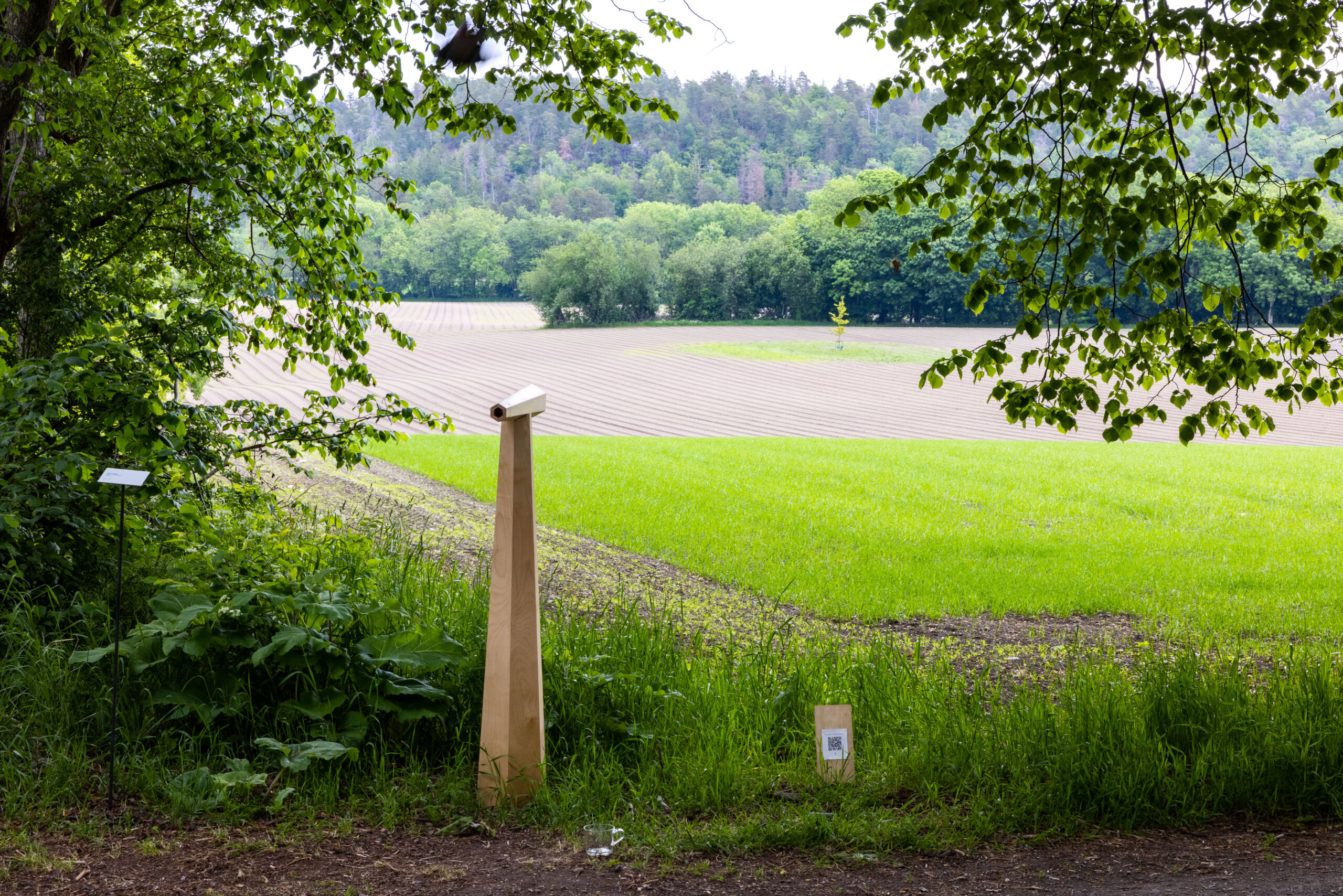
Siri Hermansen
I will see you when the sun rise
2022
Through film, photography and installations, Siri Hermansen investigates unforeseen affects in societies that are undergoing deep economic, environmental, and political change.
The projects offer unusual micro-perspectives on contemporary modes of adoption and strategies of survival in societies that can be considered as uncertain zones.
Hermansen has exhibited extensively internationally and nationally. Since 2021 she has been employed as Professor and Head of the Master program Art and Public Space at the National Academy of the arts in Oslo.
I will see you when the sun rise is an artistic manifesto for the public space. The project consists of 20 black flags, each with a white printed statement referring to survival strategies in times of tyranny and injustice. The content is appropriated from Historian Timothy Snyder’s publication On Tyranny, twenty lessons from the 20th Century, where advice on how to survive under tyranny is presented in twenty chapters. Beginning with I will, the statements are presented as personalized promises and commitments to the self and the society at large and questions how to protect life, society and democratic foundations.
Playing actively with the relationship between the I as a messenger and I as a receiver, the spectator embodies the content of the I will, and is invited to take an intellectual and emotional position through its contents.
Miming an authoritarian aesthetic, the flag project seeks to politicize the public sphere through a personal covenant that is political yet poetic, and sometimes utopian at its best and worst.
I will not obey in advance.
I will defend institutions.
I will beware the one-party State.
I will Take responsibility for the face of the world.
I will Remember Professional Ethics.
I will Be wary of Paramilitaries.
I will Be reflective If I must be Armed.
I Will Stand out.
I will Be kind to our language.
I will Believe in Truth.
I will Investigate.
I will make Eye contact And Small talk.
I will Practice Corporal Politics.
I will Establish A private Life.
I will contribute to good causes.
I will learn from pears in other countries.
I will listen for dangerous words.
I will be calm when the unthinkable arrives.
I will Be a Patriot.
I will be as courageous as I can.
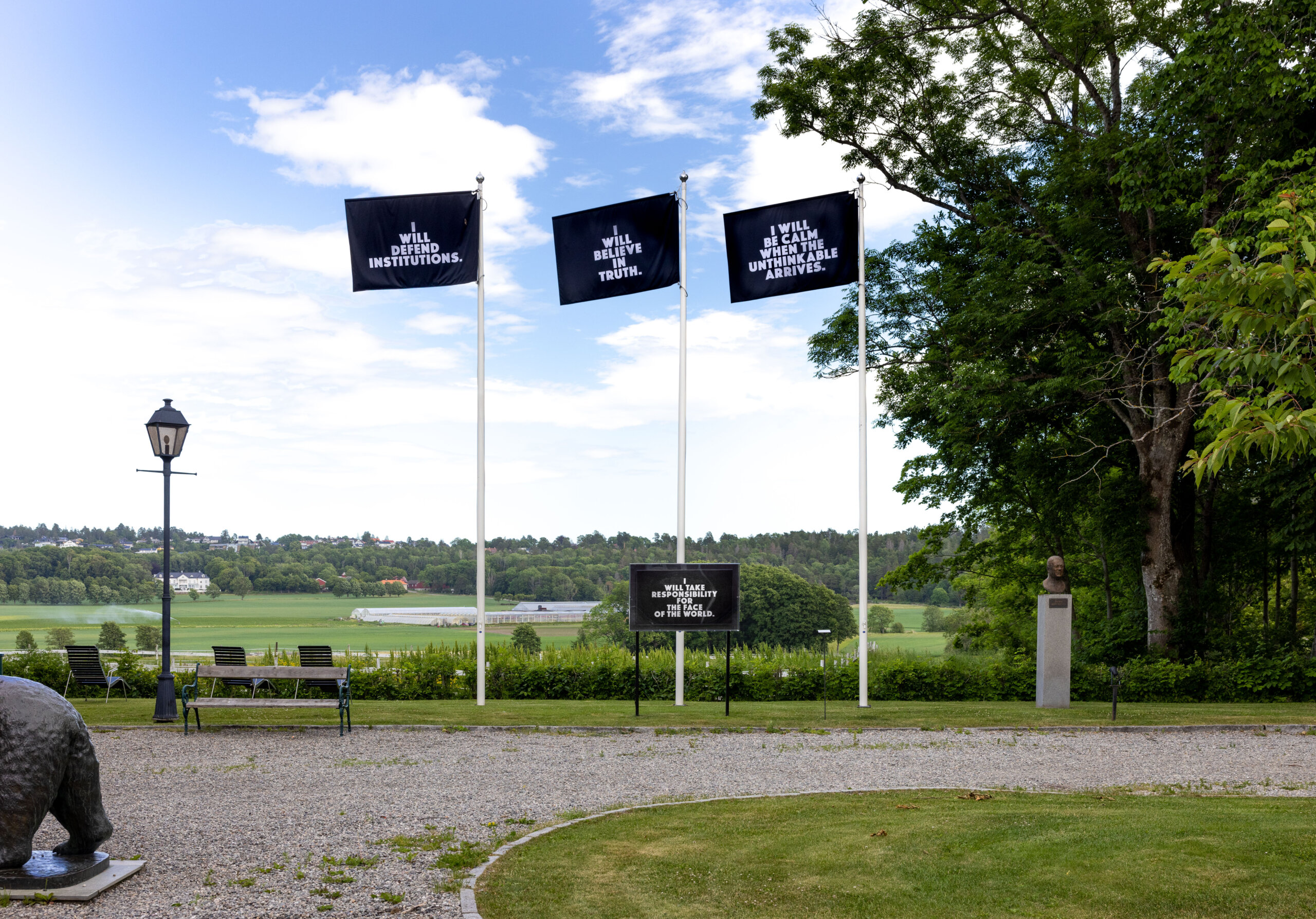
Merete Røstad
Acts of repair
2022
With the artwork Acts of Repair, the artist Merete Røstad wants to open for a deeper dialogue with landscape. By re-activating nature’s healing powers, the work encourages the audience to reflect and be aware of nature’s ability to self-heal after human intervention and traumatic events. In Acts of Repair 12 copper needles form a sculpture, together. Scattered around the landscape surrounding Galleri F 15, Acts of Repair performs landscape acupuncture on carefully selected points. The points are methodically selected based on conversations with locals, archive material and walks in the area, before each individual needle is placed in a spot selected by a dowsing stick.
The work can be experienced by following a map which can be found in the reception or digitally downloaded through the QR-code placed on a small sign each of the needles.
Merete Røstad (1975) is an interdisciplinary artist and educator with a practice rooted in research of collective memory, memory work and archives. Røstad uses participatory processes, installation and sculpture as a method in working with the public in the public sphere. Røstad has a doctorate in artistic research with the project The Participatory Monument – Remembrance and Forgetting as Art Practice in Public Sphere (2018) at the Oslo Academy of the Arts (KHiO) and a master’s in Art in Public Space and new artistic strategies from Bauhaus University. She works as an associate professor at the master’s Program in Art and Public Spaces and is the research leader at the Department of Arts and Crafts at KHiO. Røstad leads two international interdisciplinary research projects: MEMORYWORK and ARcTic South. Her work has been shown nationally and internationally in public spaces, at festivals, galleries, and museums. Røstad lives and works in Oslo and Berlin.

